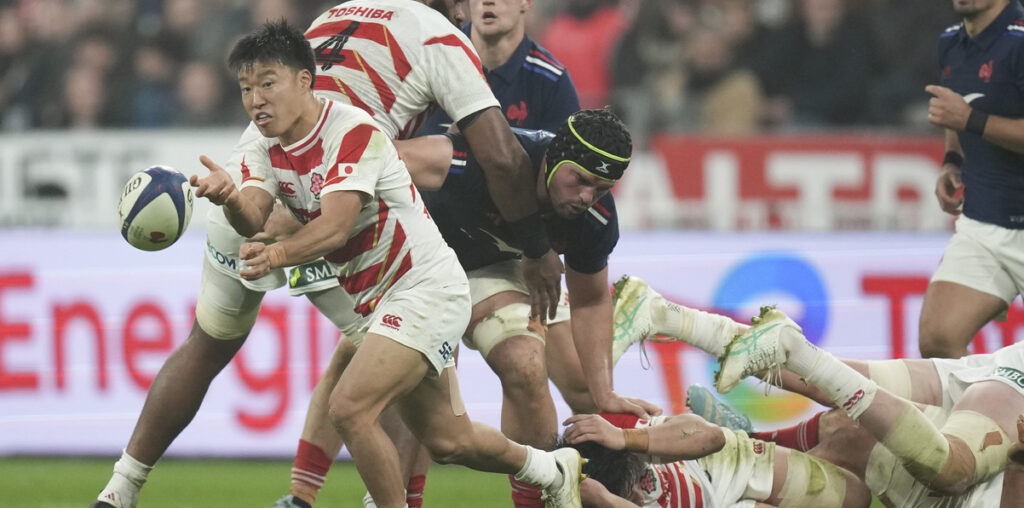GLASGOW — Autumn. It’s an important time of year in the rugby union calendar. For four weeks each November, club matches are shelved so that international teams can get together and test themselves against their rivals. World Rugby has branded the group of fixtures the Autumn Nations Series.
Although there is no tournament to win or trophy to lift, the matches provide international coaches with valuable insight into where their squads stand within the global pecking order and what needs to be worked on to see future improvement.
For Japan, the 2024 Autumn Series affords returning head coach Eddie Jones the chance to analyze his players as they take on some of rugby’s toughest challenges.
Japan’s autumn program got underway with a home match against New Zealand in Yokohama on October 26. From there, it traveled to Paris to take on France at the Stade de France on November 9. After that a slightly easier, on paper, test against Uruguay was scheduled for November 16 at Chambéry Savoie Stadium in Chambéry, France (around 570 km southeast of Paris). Japan’s autumn fixtures will conclude with a clash against England at Twickenham (recently renamed Allianz Stadium) in London on November 24.
With three out of the four fixtures now played, read on for an analysis of how Japan has performed so far this autumn.
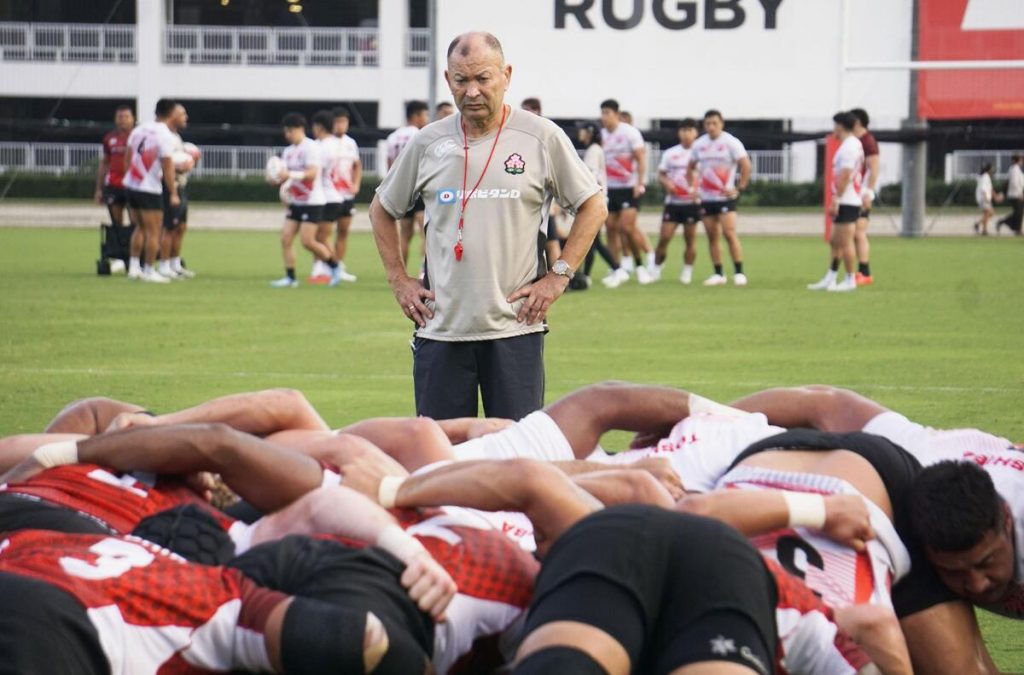
Preparations for the 2027 Rugby World Cup Begin Now
With rugby’s next World Cup only three years away, Jones decided now was the time to include many younger players in his squad for this series of matches.
His 37-man squad contained only five players with 20 caps or more. Five was also the number of uncapped players called up. Across the playing group, the number of caps averages out at 10 per player.
With such a high level of inexperience at the international level, it was to be expected that Japan would find things difficult on this tour ― especially when it faced the might of New Zealand and France.
Jones, perhaps anticipating some questions regarding his selection, got ahead of the curve during the squad announcement press conference.
“We want to keep introducing new blood into Japanese rugby,” said the veteran coach who returned to manage Japan in January 2024.
He added, “Between 2020 and 2023, Japan had 33 new test caps over four years. In 2024 we’ve had 17 already. We’re bringing new blood in and creating a new generation of players to increase the depth and quality of our squad.”
When undertaking any sporting challenge with a number of young players playing at the highest level for the first time, some harsh lessons are to be expected. How harsh would things be for the Brave Blossoms this autumn? We were about to find out.
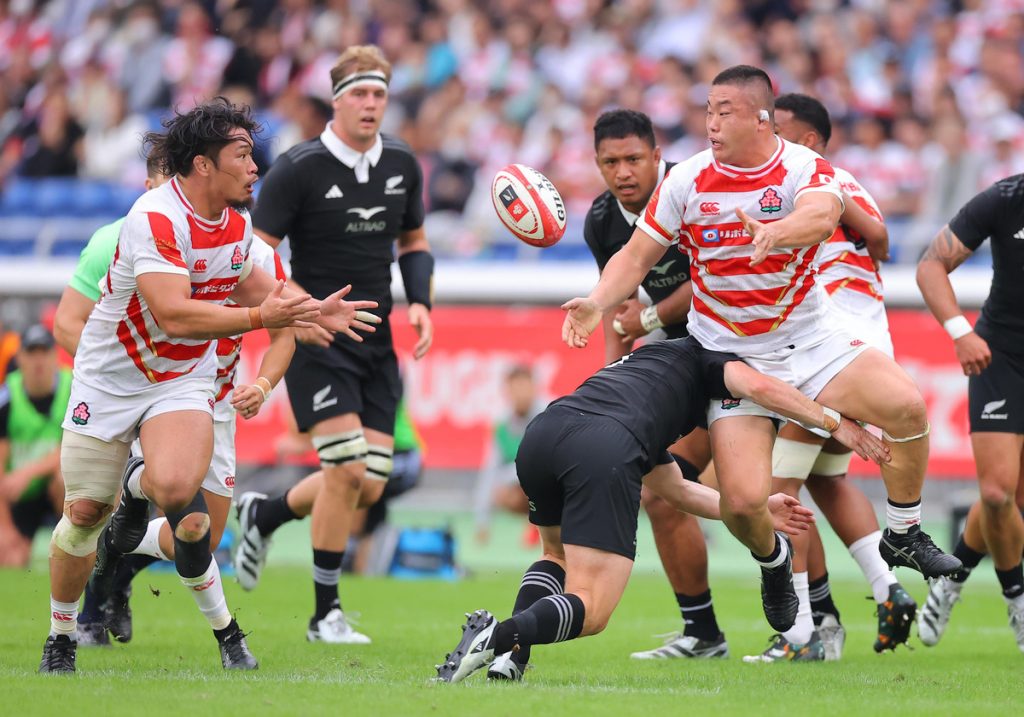
A Test Against the All Blacks in Yokohama
Before Japan and New Zealand departed for Europe, they faced off in an early autumn test match at Nissan Stadium on October 26.
Jones included his five most experienced players in the starting 15 ― hooker Atsushi Sakate, lock Warner Dearns, flanker Kazuki Himeno, center Dylan Riley and fly-half Harumichi Tatekawa, who captained the team ― but it would be a baptism of fire for his team.
New Zealand earned a convincing 64-19 victory. The All Blacks scored 10 tries, seven of which were scored in an electrifying first half, as Japan was blown away.
Although the scoreboard reflected a huge gap between the teams there were some positives for Japan. In scoring three tries courtesy of Jone Naikabula, Faulua Makisi and replacement prop Opeti Helu, it demonstrated its attacking ability and pace with the ball. However, on too many occasions during the match, Japan turned the ball over to its talented opponent.

In total Japan turned the ball over 25 times during the match as it struggled to compete at the breakdown against the powerful New Zealand forwards. Surrendering possession that many times during 80 minutes makes it difficult to prosper against any opposition.
With plenty to work on, Japan had two weeks to prepare for an even more difficult assignment against France in Paris.

France Runs Riot Against the Brave Blossoms at Stade de France
On Saturday, November 9 at 9:10 PM local time (Sunday, November 10, 5:10 AM JST) France was in rampant form. The home team had a spring in its step from the off as superstar scrum-half Antoine Dupont returned to France’s lineup for the first time since the 2023 Rugby World Cup.
Jones made seven changes to the team from the New Zealand match. Most notably, young hooker Mamoru Harada coming in for Sakate and Toyota Verblitz winger Siosaia Fifita replacing teammate Nicholas McCurran in the center. Toulouse scrum-half Naoto Saito brought his experience to the No 9 jersey in place of Shinobu Fujiwara.
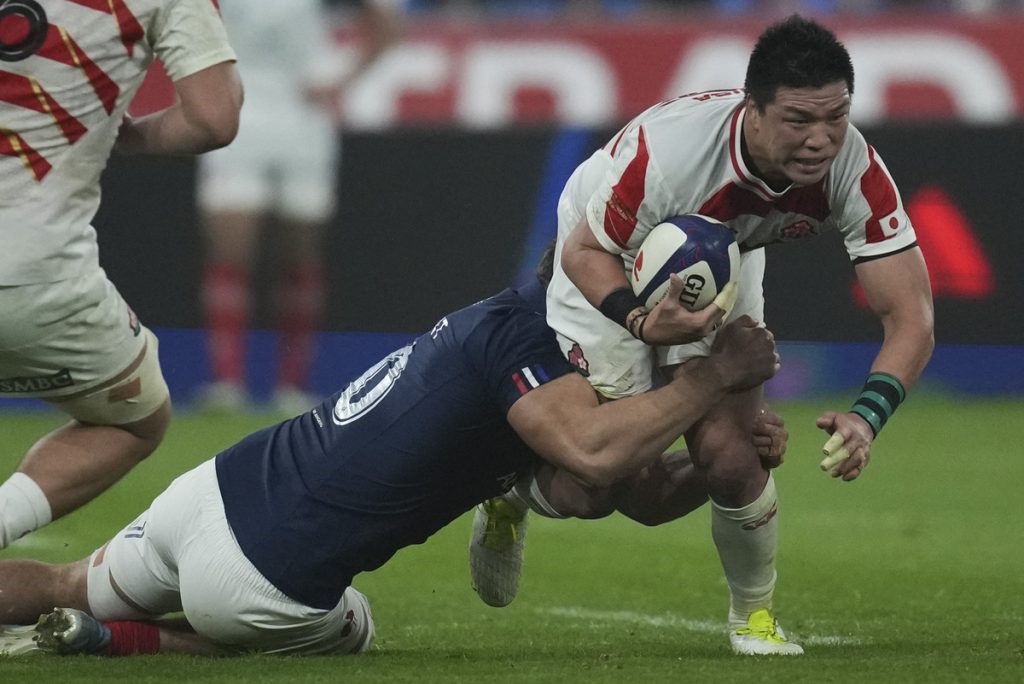
Prior to the match starting it was noticeable how lightweight Japan’s forward pack appeared compared to their French counterparts. It looked like it could be a physical mismatch.
Dupont’s return inspired the home team, which scored eight tries on the night. Five of the tries were scored in a blistering first half. The opening 40 minutes saw Japan struggle to cope with the physicality of France. It also couldn’t get any possession of the ball and trailed 31-0 at the break.
Japan gave a better account of itself in the second half, scoring a couple of nice tries through captain Tatekawa and replacement flanker Tevita Tatafu. Tatekawa’s try in particular was a splendid length of the field attack. The short clip below highlights the skill Japan has when it gets the ball moving but also underlines how it struggled to match the physicality of France in its 52-12 defeat.
Comments From Jones Following Japan’s Defeat to France
Physicality was the buzzword for Jones in his post-match remarks. “The first half we physically didn’t cope with France, they blew us off the park,” the coach said, according to Kyodo News.
Jones went on to add: “I’m really pleased with the effort of the young team in the second half. They tried to play and we had some good pieces of play.”
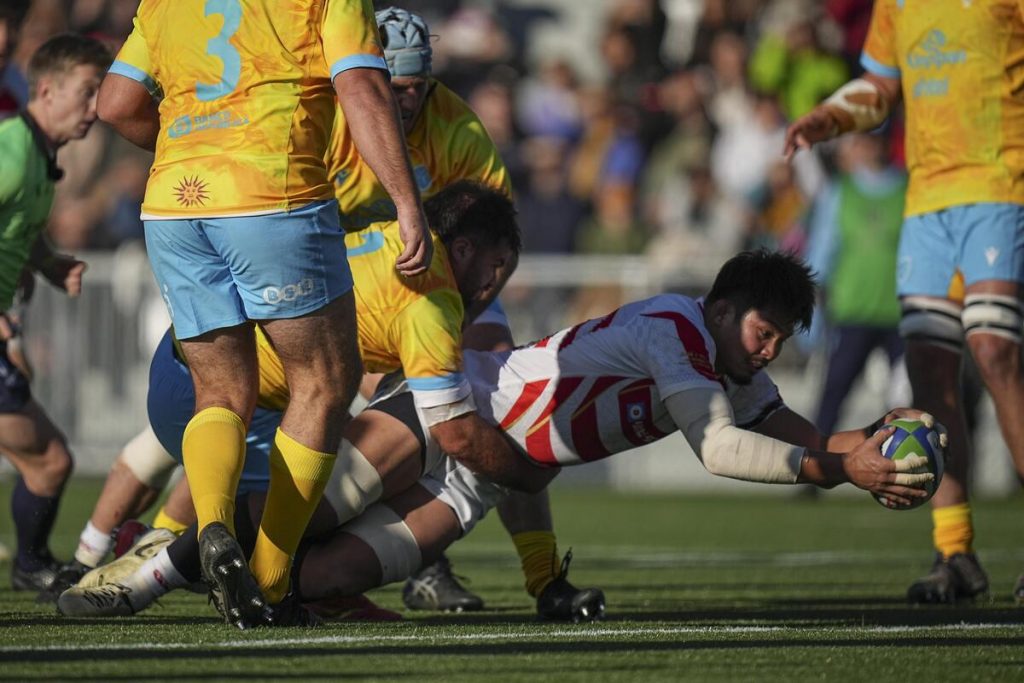
Moving on to Challenge 19th-Ranked Uruguay
After being huge underdogs against New Zealand and France, Japan was expected to beat Uruguay on November 16.
Ranked 14 in the world, Japan made four personnel changes to its starting selection. Amato Fakatava returned to the forward pack while auxiliary back Takuro Matsunaga played at fly-half to give Tatekawa a rest. Himeno captained the team from the No 8 position.
In the pre-match press conference, Jones noted Japan’s habit of turning the ball over in its two previous games.
“We’re putting a lot of pressure on ourselves with the sort of rugby we’re playing and we understand that. We turn the ball over too much, giving the opposition unstructured situations to attack from,” he remarked.
On the day, Japan scored five tries as it battled back from behind to record a 36-20 victory. The Brave Blossoms also had to overcome the sin-binning of scrum-half Saito and the red card shown to Dearns in the 64th minute.
It was a struggle for Japan at the neutral venue close to the Swiss border. However, it overcame adversity to secure a morale-boosting win. The ill-discipline is a concern, though, as teams coached by Jones in the past became known for conceding too many penalties and suffering yellow and red cards as a result. Hopefully, this won’t become a trend for Japan.
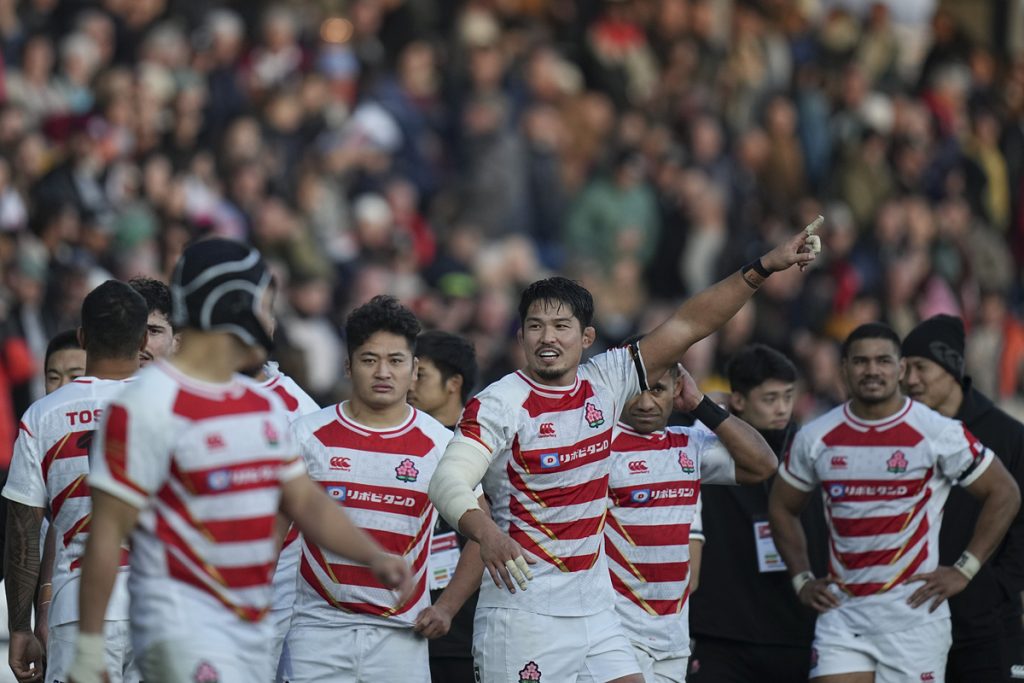
Overall Analysis as Japan Heads to London
The Autumn Nations Series is drawing to a close. Japan’s final fixture puts it up against England on Sunday, November 24 at 4:10 PM local time (Monday, Nov 25, 1:10 AM JST).
England is a wounded team at the moment having suffered three defeats during its autumn campaign. That could spell danger for Japan.
Eddie Jones, returning to face a team he previously coached, has been very clear about the way he wants his Japan team to play. He wants the Brave Blossoms to attack with pace and play a high-tempo game. And he accepts at this stage of its development there will be mistakes made and turnovers committed as his players adjust to the high-risk style of play.
At this moment, there isn’t much that can be done about being outmatched physically by opponents. It has to be a learning process as Jones builds his team up towards his goal of Japan reaching the knockout stages of the 2027 Rugby World Cup.
The phrase short-term pain for long-term gain springs to mind. No matter what happens against England this weekend, this series of matches could be remembered as the time a new generation of Japanese rugby talent took some heavy defeats but adjusted to the demands of the sport at its highest level in the process.
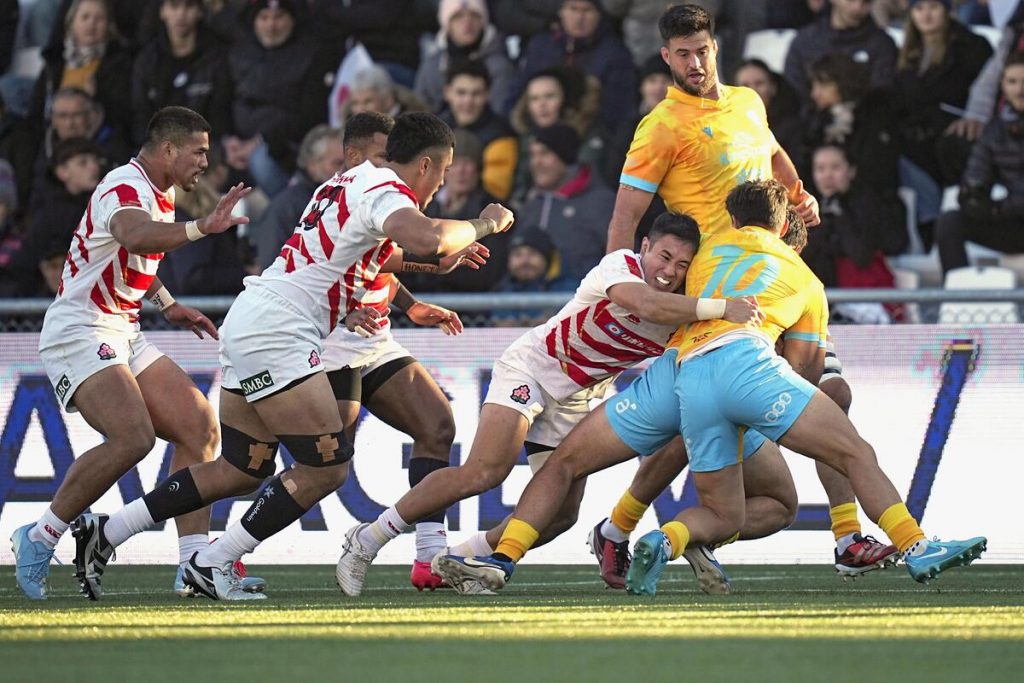
RELATED:
Author: Colin Morrison
Morrison is a freelance sportswriter. Find his stories on SportsLook. Writing since 2016, his byline currently appears on FightsATW.com where he covers boxing. He has previously written for NYFights.com and spitballingpod.com. His main areas of interest are boxing, soccer, golf and rugby union. Morrison is from Scotland and can be found on X (formerly Twitter) @Morrie1981.
